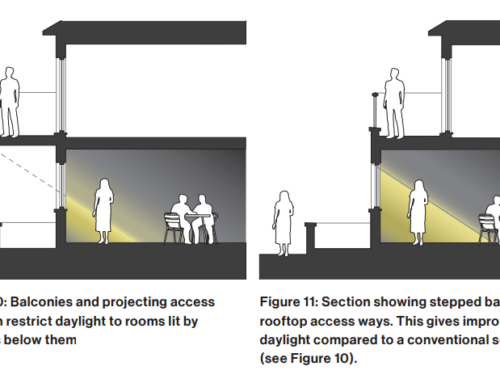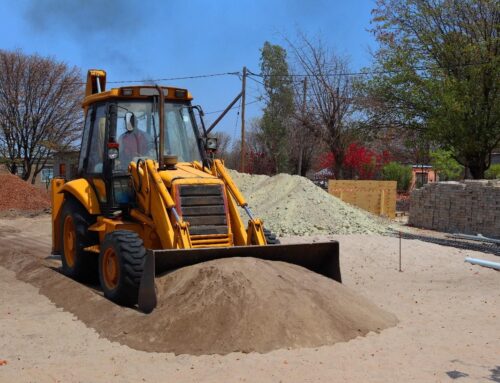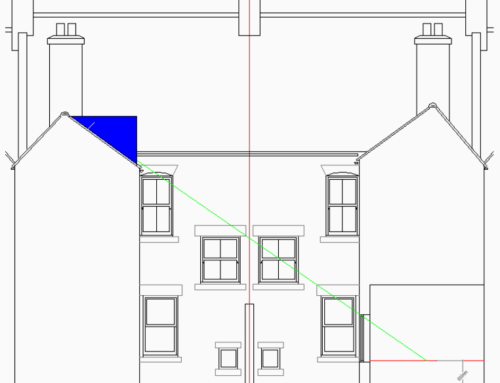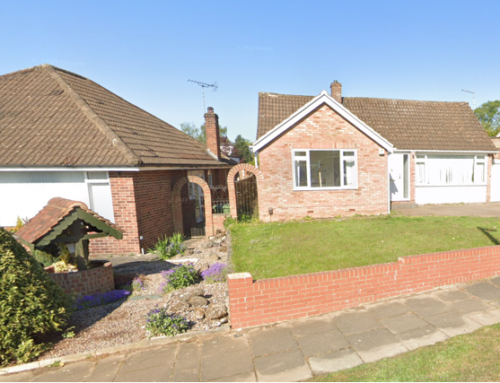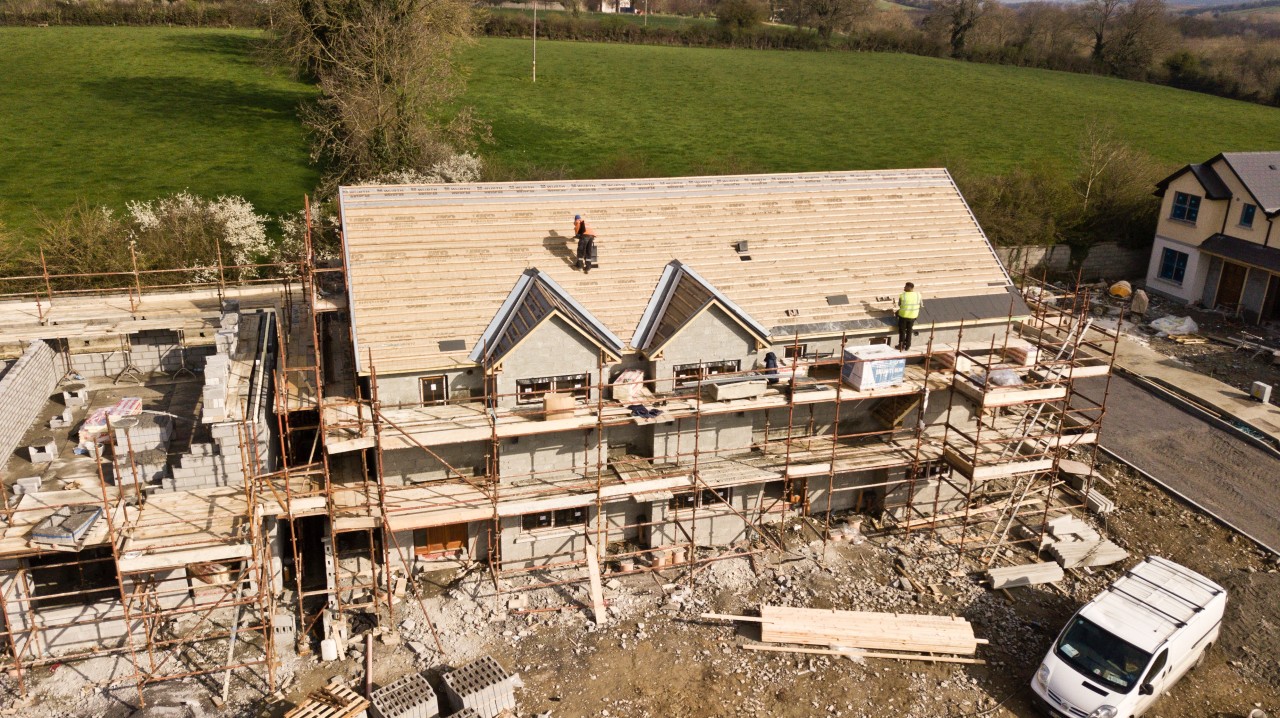
Over the last twelve months, we have seen an increase in enquiries from self-builders and small to medium-sized property developers who are buying plots of land upon which they intend to build.
At the smaller end of the scale, this is typically a self-builder looking to build a new house for either resale or to live in, usually a small plot that once belonged to a larger garden of the adjoining house; a typical ‘infill’ plot.
The sites that 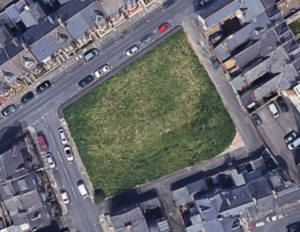 small housebuilders are looking at are typically plots for perhaps 2 to 4 houses, again often squeezed into plots sold off from an adjoining property. Otherwise, they might be plots that once housed former businesses that have now since ceased trading where the owners are looking to sell on their land as a development opportunity. Typical examples being small garages, former petrol stations etc.
small housebuilders are looking at are typically plots for perhaps 2 to 4 houses, again often squeezed into plots sold off from an adjoining property. Otherwise, they might be plots that once housed former businesses that have now since ceased trading where the owners are looking to sell on their land as a development opportunity. Typical examples being small garages, former petrol stations etc.
The other common scenario is a developer looking at already cleared sites, where perhaps a formerly dilapidated building has been demolished for safety reasons and to reduce maintenance costs. These sites have commonly been used for temporary car park uses and, in city centres, are naturally often surrounded by neighbouring properties. You will have seen these dotted around. Often, these are sites that are ripe for developments for new apartments, which probably most often the intention of the developer.
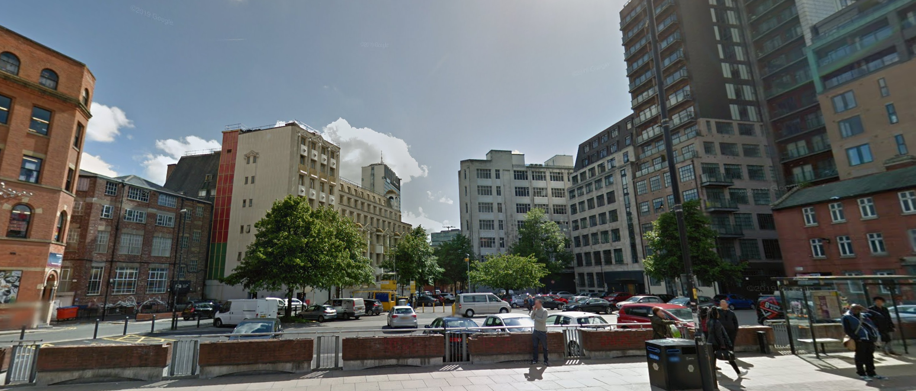
Unfortunately, we keep coming across the same situation, time and time again, of a developer buying such a plot (many of them being sold with planning permission) without first considering the potential development constraints regarding legal Right to Light. These occur on the sites that have other buildings situated close by.
Right to Light matters are separate to the planning system.
Even if a scheme has planning approval, if the proposed development will cause neighbouring windows of a certain age to be affected to a certain level, then legal injuries could become apparent which could result in the development not being viable. This could be due to a neighbour successfully being granted an injunction or requiring significant compensation.
An alteration in the proposed mass of a scheme could affect the anticipated profit and ultimately the deliverability of the scheme. Clearly, if you have based your development appraisal on the assumption you can build all the units you had in mind, and thus purchased the land for ‘X’, any smaller development is not going to ‘stack up’ as well, if not at all, due to the reduction in profit. In some cases, plots have been purchased where no development is possible at all, given the position adopted by neighbours with legal rights of light, who are not willing to negotiate compensation, and whereby the likely loss of right would be significant.
TIPS FOR DEALING WITH PLOTS OF LAND
- Check out the surrounding properties. Do they have windows facing the development site? How old are the windows? (Windows over 20 years old will most likely have legal rights). Can your scheme be designed to reduce the impact on neighbouring windows?
- Don’t ignore windows to ‘non-habitable’ areas. So you’ve found your site, you have followed item 1 above and have identified that there are nearby neighbouring properties but they only have landing/utility/WC/staircase (non-habitable) windows, and therefore you have nothing to worry about, right? Wrong. Unlike at Planning, where non-habitable windows are not considered, legally they can have rights too.
- Check out the deeds. Even if a neighbouring property has not acquired rights through the passage of time (20 years), a neighbouring building may have rights because there are restrictive covenants in the deeds. Have a solicitor well-versed in rights of light carry out a title review for you.
- Assess the risk and do this at an early stage. Ideally, before putting in your offer for the site, consider the potential right of light constraints posed by nearby buildings. Quantify the risk, calculate potential compensation, and re-negotiate the purchase price if possible. If not, consider walking away. If you have already bought the site, you need to consider assessing matters before starting to build.
- Acknowledge the risk. Try to design out the impact upon the neighbours. Sometimes this will not be possible. In such situations, and on larger schemes, consider insuring the risk.
- So, the neighbouring properties aren’t yet 20 years old? Great! (assuming the title report comes back clean). You may have no immediate plans to develop the site. Indeed, obtaining planning may take some time. You may be waiting for the market to improve, or for financial backers to join you. How long will this take? Is there a chance that the neighbouring properties currently without rights will, in time, acquire rights before you get around to building, thus turning what was once an attractive development site, into one subsequently constrained due to neighbouring properties acquiring rights they never used to have? If this is the case, see item 7 below.
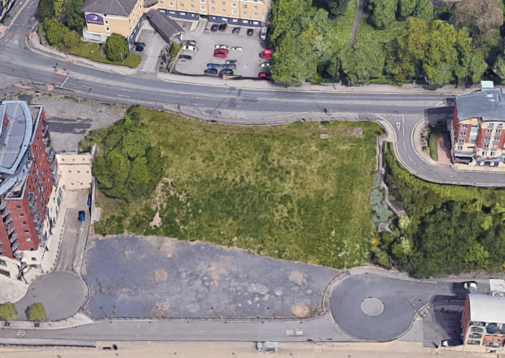
- Prevention is better than cure – right? You’ve bought a site surrounded by ‘modern’ buildings, let’s say houses 17 years old. They don’t have legal rights (by deed) or, at present, by Prescription (they have not yet enjoyed light for 20 years). However, neighbouring properties like this can be prevented from acquiring a right to light if the light to their windows can be obstructed for one full year. If this happens, the neighbours lose their right to light that they have enjoyed (in this example, for 17 years), and essentially the clock is reset to zero; they would have to wait another 20 years before establishing a right to light. Whilst this is fantastic news for developers in such a situation, care must be exercised.
The reason being is that because one full year of interrupting the neighbour’s light is necessary to ‘reset the clock’, that, after 19 years and one day, nothing can be done to prevent those neighbours going on to gain legal rights at Year 20. This is simply because after 19 years and one day there is not enough time left to interrupt the light to the neighbouring windows for one full year.
To interrupt light in this manner to stop neighbours without legal rights from gaining them, a Light Obstruction Notice (LON) can be prepared and served on neighbours.
This is a theoretical obstruction, rather than a physical blockage to the neighbours’ windows. A potential tool every developer and their advisors should be aware of.
How we can help
If you are thinking of buying a plot of land to develop (or even if you have already bought it) and you would like to consider the potential for right of light matters affecting the viability of the site development, please do contact the author [email protected] to discuss your requirements.
Related Articles
Sunlight and new house design: Avoid The Temptation to Use Standard Plans
Bungalows – Hidden Development Risks
Right to Light: Risks to Design and Build Construction Companies


